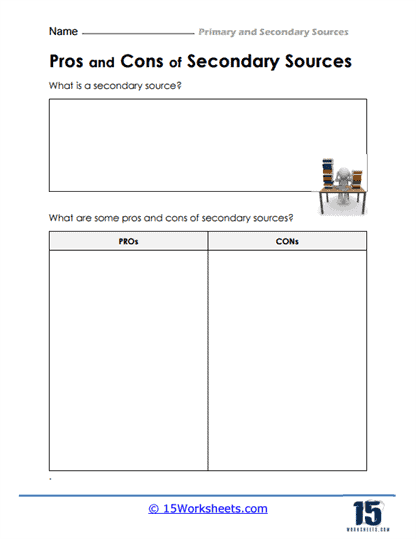Advantages And Disadvantages

Worksheet Description
This worksheet is designed to help students critically analyze secondary sources, an important component of research and academic study. The top portion of the worksheet invites students to define a secondary source, providing a rectangular space for their written explanation. Secondary sources typically include books, articles, documentaries, and critiques that interpret or analyze primary sources or events.
Below the definition area, the worksheet features a large table divided into two columns labeled “PROs” and “CONs.” This section encourages students to consider the advantages and disadvantages of using secondary sources. By listing the pros, students may highlight the interpretive insights and scholarly perspectives that secondary sources provide. Conversely, the cons might include potential biases, misinterpretations, or limitations in scope. This reflective exercise is essential for developing students’ ability to assess the credibility and relevance of the secondary sources they encounter in their research. The inclusion of an image depicting a typewriter and books emphasizes the academic nature of the task. Overall, this worksheet offers a structured approach for students to engage with and understand the role and impact of secondary sources in academic work.
